This past summer I had the great privilege to do a mini tour debut of Jonah: A Shadow Puppet Play. This 20-minute show features a custom theater with 3 shadow puppet screens, over 30 handcrafted shadow puppets and sets, original music, and a 30-gallon fish tank, as well as a few other surprises. The show is slowly paced and, combined with the mesmerizing medium of shadow and underwater puppetry, creates a refreshingly contemplative experience.
Why the Story of Jonah?
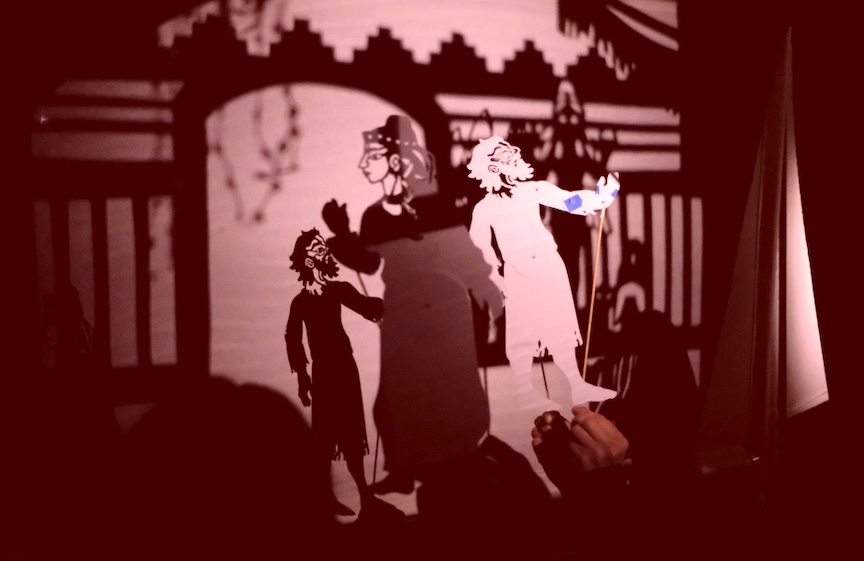 From a technical standpoint, God is already good at telling stories, and Jonah is the perfect length for a shadow puppet show. The book of Jonah is four chapters, which transfers easily into a 4-act play. The script for the show is more or less direct Scripture, adapted only to draw out the drama that is already there. The book of Jonah begs to be visual: there's a storm, a large fish, a vine, a worm. The story is familiar to many yet timeless, giving much to chew on to the one who takes the time to contemplate it.
From a technical standpoint, God is already good at telling stories, and Jonah is the perfect length for a shadow puppet show. The book of Jonah is four chapters, which transfers easily into a 4-act play. The script for the show is more or less direct Scripture, adapted only to draw out the drama that is already there. The book of Jonah begs to be visual: there's a storm, a large fish, a vine, a worm. The story is familiar to many yet timeless, giving much to chew on to the one who takes the time to contemplate it.
The second reason I chose the story of Jonah is because it speaks to both the unbeliever and the long-time Christian. God desires the salvation of the wicked city of Nineveh, not their destruction, and he demonstrates his great mercy to them. In the prophet's own words, God is gracious and compassionate, slow to anger and abounding in love, a God who relents from sending calamity. What a beautiful message to share with the world!
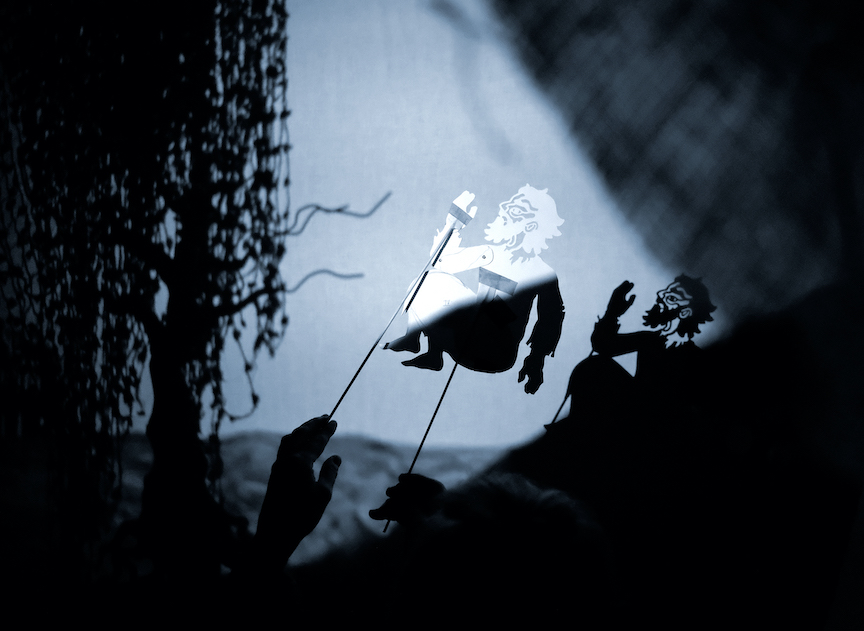 The book of Jonah challenges our human understanding of fairness, especially for the Christian. Jonah desires the destruction of his enemies (the Ninevites were indeed violent and wicked), and he runs from God because he cannot stand the thought of "those people" receiving mercy. Do we have a right to be angry at God about who he extends his mercy to, we who have been graciously and unfairly forgiven? It is a rather convicting story.
The book of Jonah challenges our human understanding of fairness, especially for the Christian. Jonah desires the destruction of his enemies (the Ninevites were indeed violent and wicked), and he runs from God because he cannot stand the thought of "those people" receiving mercy. Do we have a right to be angry at God about who he extends his mercy to, we who have been graciously and unfairly forgiven? It is a rather convicting story.
I have had the opportunity to show Jonah: A Shadow Puppet Play to both specifically Christian audiences and audiences out in the community. Both groups have expressed their excitement to hear this story and are eager to see more.
Why Puppetry?
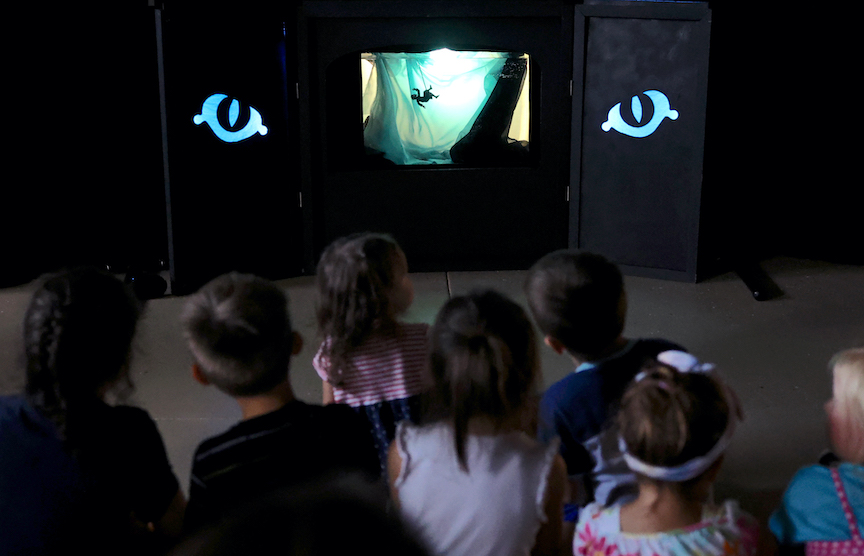 Puppetry — particularly shadow puppetry — has wide and ancient roots. It has been used for hundreds of years to tell stories of historical, political, cultural, and religious significance. It is less common to see puppets used today (outside of the Muppets and toys for kids), especially in a world that is growing more and more digital. But puppetry is a powerful tool for storytelling, especially for the Christian artist. It has intergenerational reach, requires simple materials, embraces a handmade quality, and is free to exist in any art style.
Puppetry — particularly shadow puppetry — has wide and ancient roots. It has been used for hundreds of years to tell stories of historical, political, cultural, and religious significance. It is less common to see puppets used today (outside of the Muppets and toys for kids), especially in a world that is growing more and more digital. But puppetry is a powerful tool for storytelling, especially for the Christian artist. It has intergenerational reach, requires simple materials, embraces a handmade quality, and is free to exist in any art style.
Puppetry has a childlike charm, and it inspires curiosity in how things work. Children easily connect with this, but I want to emphasize that it is absolutely for adults, too. To quote C.S. Lewis, "A children's story that can only be enjoyed by children isn't a good children's story in the slightest." The Jonah show was proof of concept that a good story, even if it is slower paced and addresses higher-level themes, engages kids and adults alike. The medium can help you see a timeless story in a fresh way.
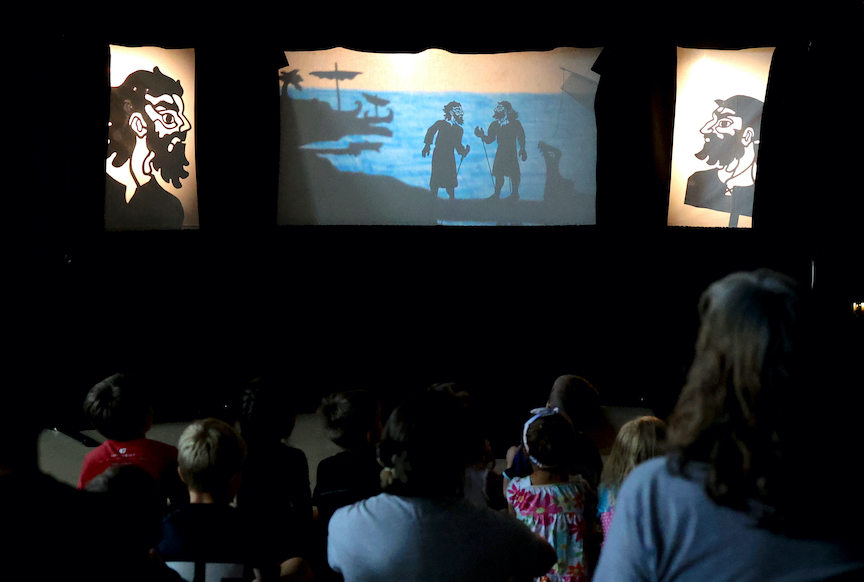 In the vein of kids engaging with puppetry, I will share a quick tangential observation: kids are naturally amazing puppeteers. Last Christmas, I created a 12-minute shadow puppet nativity show as a part of my church's live nativity event. I had several adults and a few teens to help me, and we performed the show several times. Then some of the younger kids in the congregation (ranging from 1st to 4th grade) eagerly asked if they could puppeteer for one of the performances. I agreed to let them participate after they watched once from behind the screen to quickly learn cues. To my surprise, they absolutely nailed the show, perhaps giving the best performance of the night. They were very careful in making sure the characters were in the right places at the right times, but they were also very intentional in making them look alive. For the Jonah show, I let the kids play with the puppets after the performance, and I saw a similar eagerness. I have puppetry workshop ideas developing from this observation. Give the kids the supplies and permission to tell the story, let them internalize it, and they get to tell the story to an audience of parents and adults.
In the vein of kids engaging with puppetry, I will share a quick tangential observation: kids are naturally amazing puppeteers. Last Christmas, I created a 12-minute shadow puppet nativity show as a part of my church's live nativity event. I had several adults and a few teens to help me, and we performed the show several times. Then some of the younger kids in the congregation (ranging from 1st to 4th grade) eagerly asked if they could puppeteer for one of the performances. I agreed to let them participate after they watched once from behind the screen to quickly learn cues. To my surprise, they absolutely nailed the show, perhaps giving the best performance of the night. They were very careful in making sure the characters were in the right places at the right times, but they were also very intentional in making them look alive. For the Jonah show, I let the kids play with the puppets after the performance, and I saw a similar eagerness. I have puppetry workshop ideas developing from this observation. Give the kids the supplies and permission to tell the story, let them internalize it, and they get to tell the story to an audience of parents and adults.
In shadow puppetry, humble materials can tell big stories. Shadow puppetry is simple. All that is required is a light, a screen (a sheet, newsprint paper, or a wall) and a puppet. Puppets do not have to be more than paper, a stick, and some bits of tape. Very little is needed.
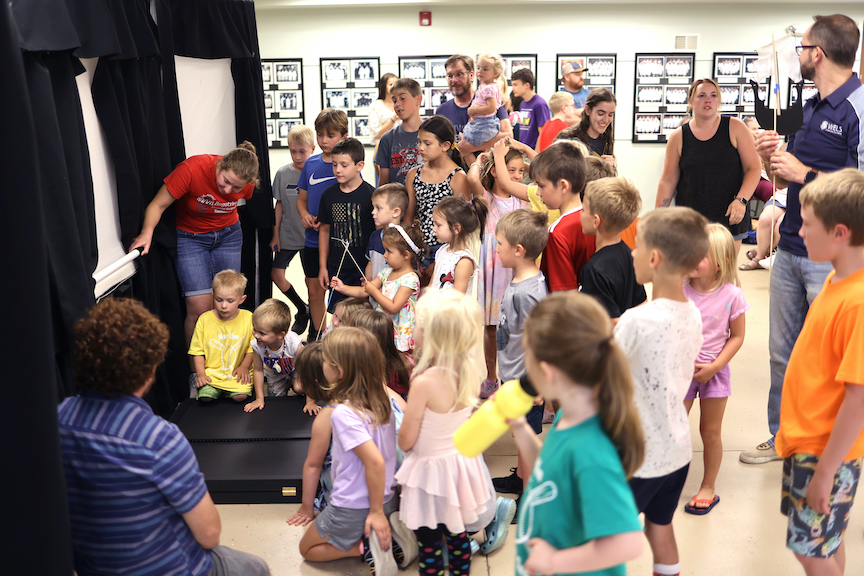 In an increasingly digital world, puppetry offers a refreshingly handmade experience. Seeing a puppet jitter or a human hand briefly slip into frame does not take away from the whole experience. It makes the telling of the story more intimate.
In an increasingly digital world, puppetry offers a refreshingly handmade experience. Seeing a puppet jitter or a human hand briefly slip into frame does not take away from the whole experience. It makes the telling of the story more intimate.
Shadow puppets are like drawings that can move, so any way that something is drawn can be emulated in a puppet's design. Jonah: A Shadow Puppet Play was designed to look like ancient Assyrian artwork, the art style from the time of Jonah. This unified the story visually and contextualized it historically. The flexibility of shadow puppet's visual style can be used to serve the story, or it could be used to serve specific audiences by drawing from a culture's puppet tradition or visual language.
What's Next?
The Jonah show continues to develop — that's one of the beauties of live performance. No two shows will be the same, and every experience is unique. With every performance, I learn more about the medium of shadow puppetry, logistics, directing, scriptwriting, organizing, audience engagement, and more. But it is a story that bears repeating and is a joy to share every time.
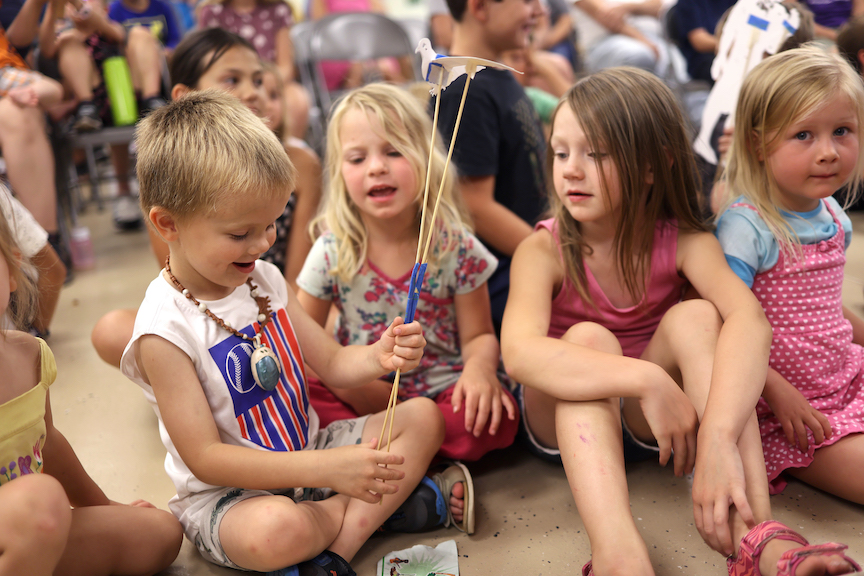 There is so much still to explore and discover in the world of puppetry — different puppetry styles, different visual languages, video work — the possibilities are endless, if not simply overwhelming. There are so many stories to tell, too. The Bible is always a rich and deep well for stories. My list of shows I want to make include Good Friday, Daniel and the lions' den, the fiery furnace, the parables, Esther, maybe even the entire book of Revelation (eventually). Currently I am working on building a repertoire of fairytales and a couple new original stories that I can take to libraries, public schools, and community storytelling events. My goal is to make art that is meaningful and beautiful, and for those stories that are less direct in sharing the gospel, my prayer is that they open up conversations where those opportunities can happen.
There is so much still to explore and discover in the world of puppetry — different puppetry styles, different visual languages, video work — the possibilities are endless, if not simply overwhelming. There are so many stories to tell, too. The Bible is always a rich and deep well for stories. My list of shows I want to make include Good Friday, Daniel and the lions' den, the fiery furnace, the parables, Esther, maybe even the entire book of Revelation (eventually). Currently I am working on building a repertoire of fairytales and a couple new original stories that I can take to libraries, public schools, and community storytelling events. My goal is to make art that is meaningful and beautiful, and for those stories that are less direct in sharing the gospel, my prayer is that they open up conversations where those opportunities can happen.
It has been a great blessing to see the doors that God has opened. I love making puppet shows, and I pray that, God-willing, it continues to be an instrument in pointing to our great Creator and Savior.
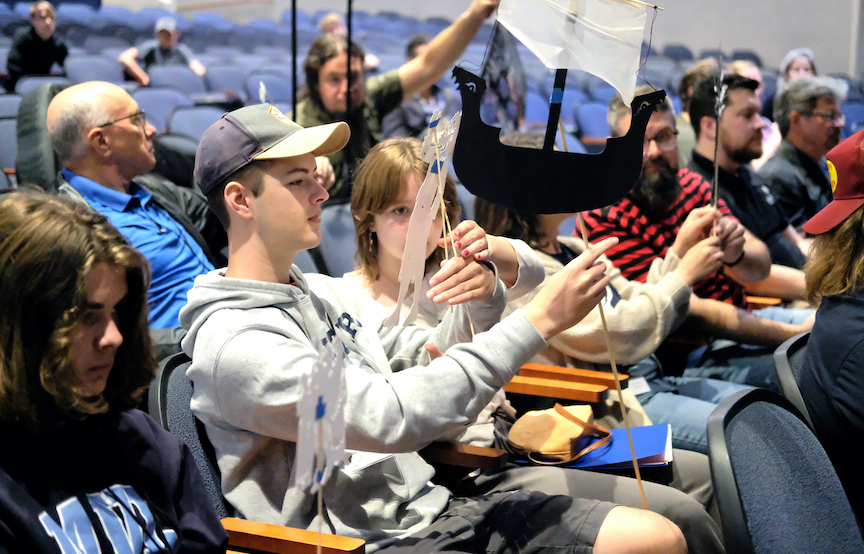 Puppetry is not a solo sport, and I think art goes farther when more hands are involved in the making of it, especially in a community of Christian artists. If you are a storyteller, writer, musician, artist, thinker, or just someone interested in the project and you have a collaboration idea, let's chat!
Puppetry is not a solo sport, and I think art goes farther when more hands are involved in the making of it, especially in a community of Christian artists. If you are a storyteller, writer, musician, artist, thinker, or just someone interested in the project and you have a collaboration idea, let's chat!
If you are interested in hosting a show or a shadow puppet workshop at your church, school, home, or community space, I would love to talk more. Comment below or email me.
Return to original language with "show original" button at top left.

Discussion
I am working on doing a Christmas shadow puppet show this year where the Sunday School kids will be telling the story and puppeteering. My church is very gracious in letting me try things. I am a big fan of visuals because it helps the stories stick in your brain, and I am a bigger fan of letting the kids tell the story. Plus, as I stated before, they really are good at it! Just need to give them the space.